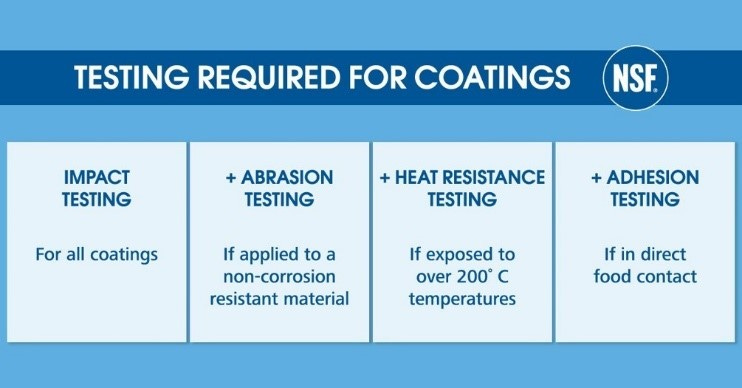(How to Properly) Test Your Metal... and Other Substances
The NSF Guide to Performance Testing.
The OttOmate Guide to NSF Certification - Technically Speaking: Performance Testing
Depending on the product, functionality and standard requirements, performance testing may be required for certification. Performance tests help to protect public health and ensure hygiene by varying aspects, such as microbial reduction via clean-in-place, material adhesion and heavy metal content, and accurate temperature management.
Performance tests may include:
Clean-in-place (e.g. beverage dispensers, ice machines)
Organic coatings (e.g. paint, epoxy, lacquer)
Temperature requirements & validation
Clean-in-Place
NSF/ANSI food equipment standards require equipment to have food zones that are cleanable by hand; however, for some machines this may be impossible to achieve. When manual cleaning isn’t possible, manufacturers rely on clean-in-place (CIP) procedures to clean and sanitize areas of their equipment that aren’t accessible.
A CIP procedure is a method of cleaning and sanitizing equipment surfaces in their assembled form by mechanically circulating or passing a detergent solution, water rinse and sanitizing solution onto or over the surfaces.
Some examples of equipment that CIP procedures would apply to include beverage dispensers, ice machines, soft-serve ice cream dispensers and blenders. The main CIP determinant is the intent of the equipment and if the design prohibits manual cleaning. Each unit is reviewed on a case-by-case basis to determine if a CIP procedure is necessary.
CIP testing verifies that food buildup and bacteria can be removed when the cleaning and instruction requirements are followed by the end user. This ensures the products served to customers remain safer and comply with national food safety standards. Testing is performed in accordance with standard requirements to validate the efficacy of the manufacturer’s recommended CIP procedure in achieving 99.9999% (or a 6-log bacteria kill rate) reduction of illness-causing microorganisms.
Organic Coatings
A coating is a layer that permanently covers the base material of the equipment. An organic coating is a resin-based coating applied to the base material by a spraying or dipping process. Other products, such as stickers, films, inks or water prints are not considered coatings. Surface treatments such as aluminum anodizing are also not considered coatings.
Different testing and material requirements apply to coatings depending on the zone where the coating is applied.
In the food zone, the coating material must meet FDA 21 CFR requirements. In the food zone, splash zone and exposed nonfood zone, the presence of intentionally added heavy metals is not allowed.
The Full OttOmate Guide to NSF Certification (More Stories to Come!)
Quick Housekeeping
I apologize. I’ve been dealing with a family medical emergency this week. As a result, stories have been non-existent. I will try to get back up and running more next week.
If you signed up for a free trial this week, please email me, and I will extend it. If you paid for an OttOmate subscription this week, email me as well and we will figure out a make good.
Thank you for your patience.
-Chris



